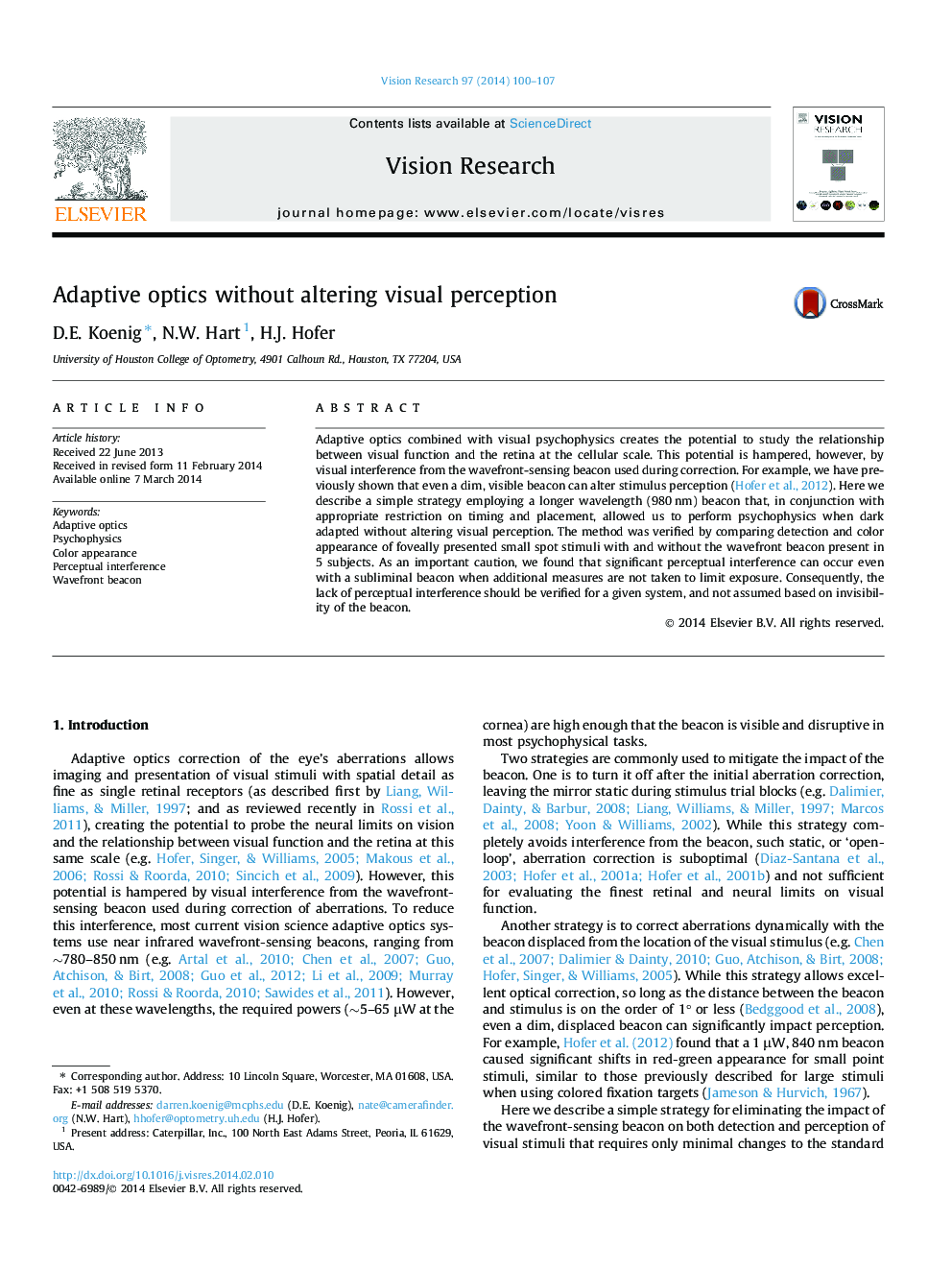| Article ID | Journal | Published Year | Pages | File Type |
|---|---|---|---|---|
| 6203550 | Vision Research | 2014 | 8 Pages |
â¢Adaptive optics wavefront beacons interfere with stimulus detection and perception.â¢Even a subliminal infrared (980 nm) beacon can significantly impact reported color.â¢This impact can be eliminated with careful restrictions on placement and timing.
Adaptive optics combined with visual psychophysics creates the potential to study the relationship between visual function and the retina at the cellular scale. This potential is hampered, however, by visual interference from the wavefront-sensing beacon used during correction. For example, we have previously shown that even a dim, visible beacon can alter stimulus perception (Hofer et al., 2012). Here we describe a simple strategy employing a longer wavelength (980Â nm) beacon that, in conjunction with appropriate restriction on timing and placement, allowed us to perform psychophysics when dark adapted without altering visual perception. The method was verified by comparing detection and color appearance of foveally presented small spot stimuli with and without the wavefront beacon present in 5 subjects. As an important caution, we found that significant perceptual interference can occur even with a subliminal beacon when additional measures are not taken to limit exposure. Consequently, the lack of perceptual interference should be verified for a given system, and not assumed based on invisibility of the beacon.
